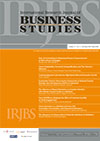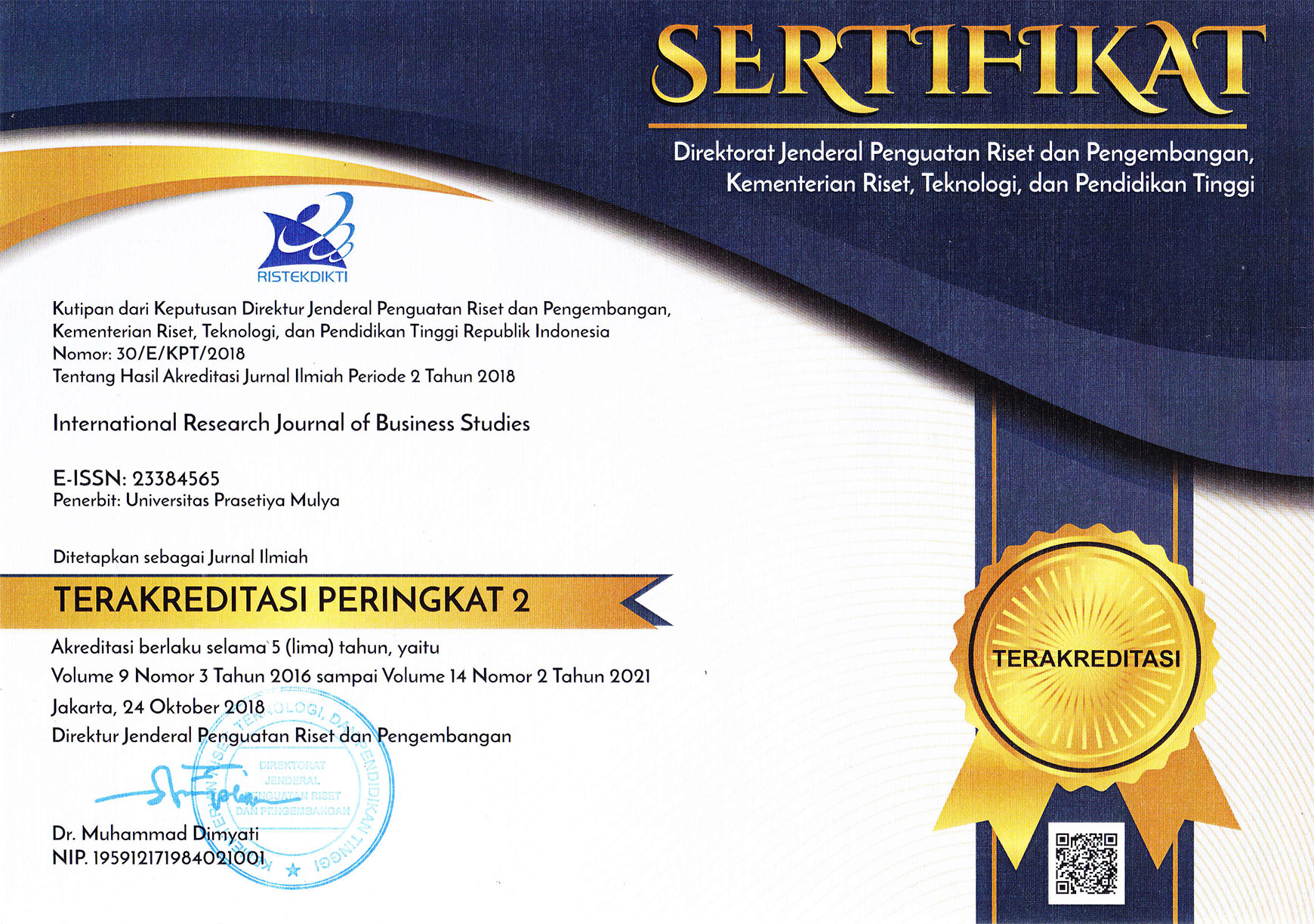The Organizational Attraction at Company-owned University
DOI:
https://doi.org/10.21632/irjbs.9.3.185-195Keywords:
Organizational attraction, Employer Knowledge, recruitment, sourcingAbstract
This study took place in a university established by a company. The aim of this study is to investigate factors which may influence the university students’ affect toward the parent company. The construct of interest is organizational attraction, which is the positive attitude of an individual regarding an organization. A combination of qualitative and quantitative methods were used in this study. The total number of participants in this study was 161 (60 males, 101 females; 84 students who never worked before, 64 worked part time, 13 have worked full time). Results showed the students had neutral attitude toward the organization as a workplace. This indicates that the students do not necessarily prefer the parent company to other companies. Other findings showed the first year students have higher level of organizational attraction compared to final year students, presumably due to word of mouth by the lecturers.
References
Anderson, M. H., Haar, J., & Gibb, J. (2010). Personality trait inferences about organizations and organizational attraction: An organizational-level analysis based on a multi-cultural sample. Journal of Management and Organization, 16(1), 140-150.
Arciniega, L. M., & Maldonado, A. (2011). Assessing the impact of dispositional resistance to change on organizational attraction. The Spanish Journal of Psychology, 14(2), 798-807.
Awang, Z. H. & Jusoff, K. (2009). The effect of corporate reputation on the competitiveness of Malaysian telecommunication service providers. International journal of business and management. Volume 4, pp 501-517.
Cable, D. M. & Turban, D. B. (2001). Establishing The Dimensions, Sources And Value Of Job Seekers Employer Knowledge During Recruitment. Research in Personel and Human Resources Management. Vol 20, 115-163.
Catanzaro, D., Moore, H., & Marshall, T. R. (2010). The impact of organizational culture on attraction and recruitment of job applicants. Journal of Business and Psychology, 25(4), 649-662.
Creswell, J. W. (2012). Educational research: Planing, conducting and evaluating quantitative and qualitative reserach 4 ed. Boston, MA: Pearson Education
Fajar, A. (3 September 2011). Waspada, Indonesia Hadapi ‘Perang SDM’. SWAwebsite: http://swa.co.id/listed-articles/waspada-indonesia-hadapi-perang-sdm
Fishbein, M. & Ajzen, I. (1975). Belief, Attitude, Intention And Behavior: An Introduction To Theory And Research. Massachusetts: Addison-Wesley
Franca, V. (2012). The strength of the employer brand: Influences and implications for recruiting.Journal of Marketing and Management, 3(1), 78-122.
Highhouse, S., Lievens, F., & Sinar, E. F. (2003). Measuring Attraction To Organizations. Sage Publications. vol 63 no 6
Howitt, D. & Cramer, D. (2011). Introduction to research methods in psychology. Upper Saddle River, New Jersey: Pearson Education.
Lievens, F., & Highhouse, S. (2003). The relation of instrumental and symbolic attributes to a company’s attractiveness as an employer. Personnel Psychology, 56(1), 75-102.
Lyons, B. D., & Marler, J. H. (2011). Got image? examining organizational image in web recruitment. Journal of Managerial Psychology, 26(1), 58-76.
Patton, M. Q. (2002). Qualitative Research & Evaluation methods 3 ed. Sage Publication: USA
Phillips, J. M., Gully, S. M., & Castellano, W. (2014). Improving recruiting effectiveness for innovative startups: The importance of job advertisement wording. American Journal of Entrepreneurship, 7(1), 102-141.
Ryan, A. M., & Tippins, N. T. (2004). Attracting and selecting: What psychological research tells us. Human Resource Management, 43(4), 305-318.
Uen, J. F., Peng,S. P., Chen,S. Y. & Chien, S. H. (2011). The impact of word of mouth on organizational attractiveness. Asia Pacific Management Review, 16(3)
Van Hoye, G (2013). Recruiting Through Employee Referrals: An Examination of Employee Motive. Human performance. 26, 451-464.
Van Hoye, G., Weijters, B., Lievens, F., & Stockman, S. (2016). Social Influence in Recruitment: When is Word-Of-Mouth Most Effective?. International Journal of Selection And Assessment. Vol 24, 1.
Zhang, L., & Gowan, M. A. (2012). Corporate social responsibility, applicants’ individual traits, and organizational attraction: A person-organization fit perspective. Journal of Business and Psychology, 27(3), 345-362. Retrieved from http://dx.doi.org/10.1007/s10869-01
Downloads
Submitted
Published
How to Cite
License
Copyright (c) 2016 Rocky, Rayini Dahesihsari

This work is licensed under a Creative Commons Attribution-ShareAlike 4.0 International License.
Journal Author(s) Rights
For IRJBS to publish and disseminate research articles, we need publishing rights (transferred from the author(s) to the publisher). This is determined by a publishing agreement between the Author(s) and IRJBS. This agreement deals with the transfer or license of the copyright of publishing to IRJBS, while Authors still retain significant rights to use and share their own published articles. IRJBS supports the need for authors to share, disseminate and maximize the impact of their research and these rights, in any databases.
As a journal Author, you have rights to many uses of your article, including use by your employing institute or company. These Author rights can be exercised without the need to obtain specific permission. Authors publishing in IRJBS journals have comprehensive rights to use their works for teaching and scholarly purposes without needing to seek permission, including:
- use for classroom teaching by Author or Author's institution and presentation at a meeting or conference and distributing copies to attendees;
- use for internal training by the author's company;
- distribution to colleagues for their research use;
- use in a subsequent compilation of the author's works;
- inclusion in a thesis or dissertation;
- reuse of portions or extracts from the article in other works (with full acknowledgment of the final article);
- preparation of derivative works (other than commercial purposes) (with full acknowledgment of the final article);
- voluntary posting on open websites operated by the author or the author’s institution for scholarly purposes,
(But it should follow the open access license of Creative Common CC-by-SA License).
Authors/Readers/Third Parties can copy and redistribute the material in any medium or format, as well as remix, transform, and build upon the material for any purpose, even commercially. Still, they must give appropriate credit (the name of the creator and attribution parties (authors' detail information), a copyright notice, an open access license notice, a disclaimer notice, and a link to the material), provide a link to the license, and indicate if changes were made (Publisher indicates the modification of the material (if any) and retain an indication of previous modifications.
Authors/Readers/Third Parties can read, print and download, redistribute or republish the article (e.g. display in a repository), translate the article, download for text and data mining purposes, reuse portions or extracts from the article in other works, sell or re-use for commercial purposes, remix, transform, or build upon the material, they must distribute their contributions under the same license as the original Creative Commons Attribution-ShareAlike (CC BY-SA).
This work is licensed under a Creative Commons Attribution-ShareAlike 4.0 International License.








